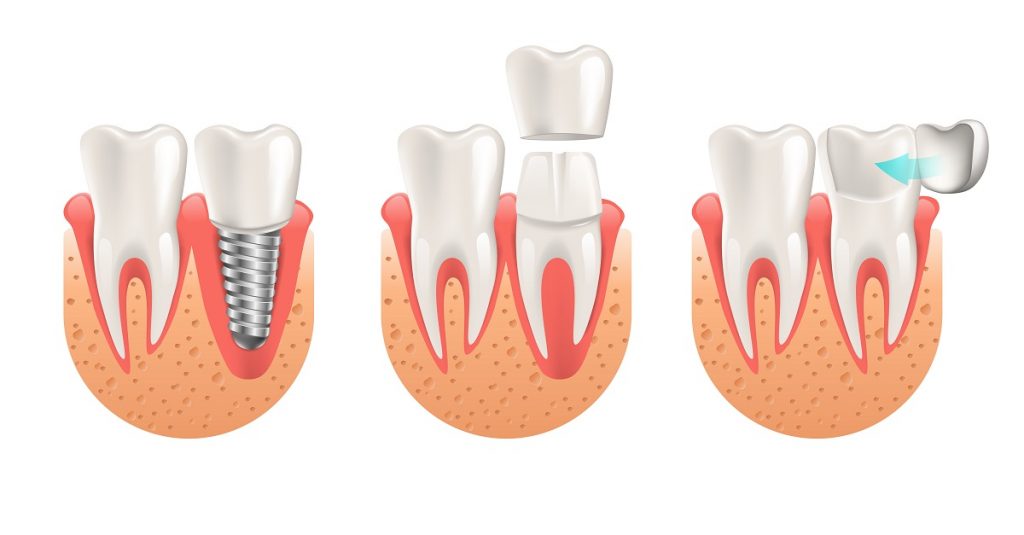How Do Dental Crowns Work?
Dental Implants Solutions
Dental Crowns can be used to restore a badly damaged tooth or to form a tooth to fit the rest of your teeth. If you keep your teeth clean, your crowns should last a long time. Because dental crowns are custom made to match your teeth. A crown can prevent future harm to a tooth that has been injured. A crown protects the visible part of the tooth from further injury or decay. It both strengthens and enhances the appearance of a tooth.
Who Needs Dental Crown?
Your dentist says the following folks may benefit from a crown:
- Instead of a large filling, employ a dental bridge.
- Bridge missing teeth.
- Avoid a broken tooth
- A fractured tooth
- A vein stained or malformed tooth.
- A crown should cover a dental implant.
What Is The Crown Made Of?

Crowns can be created from a range of different types of materials. This application takes a very large variety of different kinds of materials. Crowns are made of tooth-colored materials to blend in with your natural teeth.
You want a crown that looks and feels natural. When choosing a crown material, you and your dentist will consider:
- Tooth position and function.
- Where the gums are.
- The number of teeth visible when you grin.
- How adjacent teeth appear in relation.
Consider the price and insurance. After addressing these topics with your dentist, ask about your preferences.
How To Put Crown Successfully?
A custom-made crown will require multiple visits to the dentist. The patient can only get the height in one stop if the dentist has CEREC or a comparable system.
How Does Dental Crown Work?
- The method varies depending on the type of dental crown.
- First, your dentist will remove the decay from your tooth, which may need a root canal or both.
- They develop a mold of your teeth to ensure a perfect fit.
- A temporary crown protects the tooth while the permanent crown is being created. To avoid damagin this temporary cap, avoid eating anything sticky or hard while wearing it.
- The crown should be ready in a week.
Putting On A Dental Crown
- The treatment usually takes two visits to the dentist. The dentist next installs a crown on top of the prepared tooth.
- Your dentist removes the outer section of the tooth, including any cavities. The tooth's core may need to be strengthened to support the crown.
- An impression of your teeth is obtained to create a replica. A print can be made of mold or digital scan of the tooth.
- Next, the dentist places the final crown in your mouth and modifies it to your liking. The crown is glued to the tooth when both you and your dentists are happy with it.
A temporary crown protects your tooth while the permanent crown is made. The permanent crown is completed in less than two weeks. The tooth may be sensitive to warmth and cold when wearing a temporary crown. During this time, avoid gum and sticky foods. In some circumstances, your dentist can place your permanent crown on the same day.
Contact your Walnut Creek Implant dentist, Massood Darvishzadeh, DDS at Dental Implant Solutions today for more information about dental crowns.
Resource:
*Neither this nor any other content in this media is meant to prescribe, recommend, or prevent any treatment or procedure. We highly recommend that you get the advice of a qualified dentist or other medical practitioners regarding your specific dental condition.
Subscribe To Our Newsletter
Get Updates And Learn From The Best
More To Explore



CONTACT US
Massood Darvishzadeh, DDS
2021 Mt Diablo Blvd., Suite 100A
Walnut Creek, CA 94596
(925) 939-2600info@dentalimplantsolutions.net